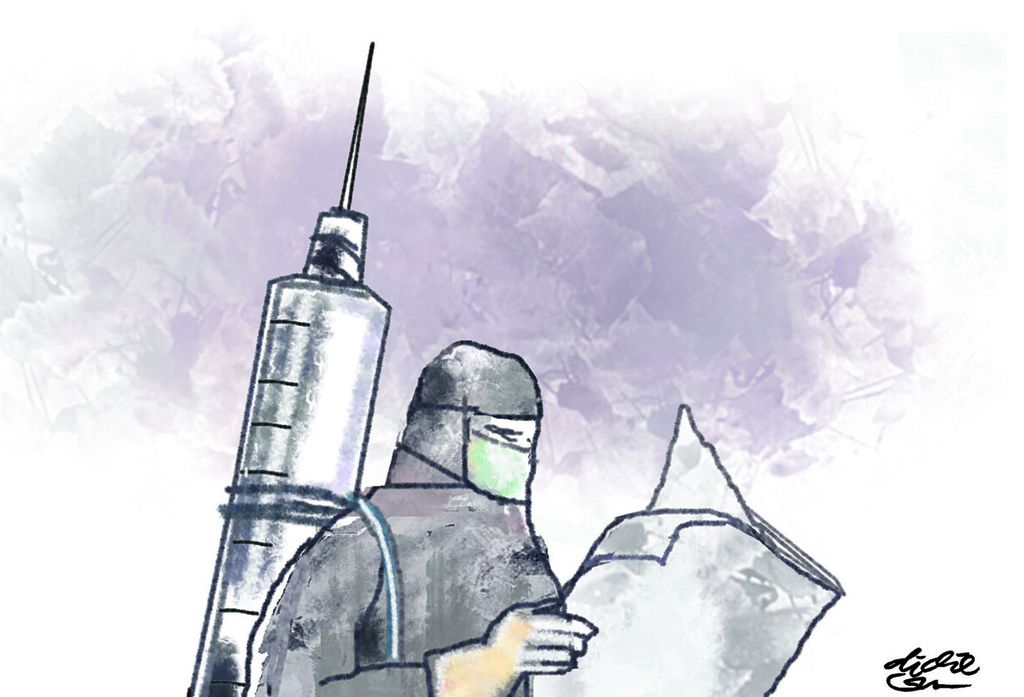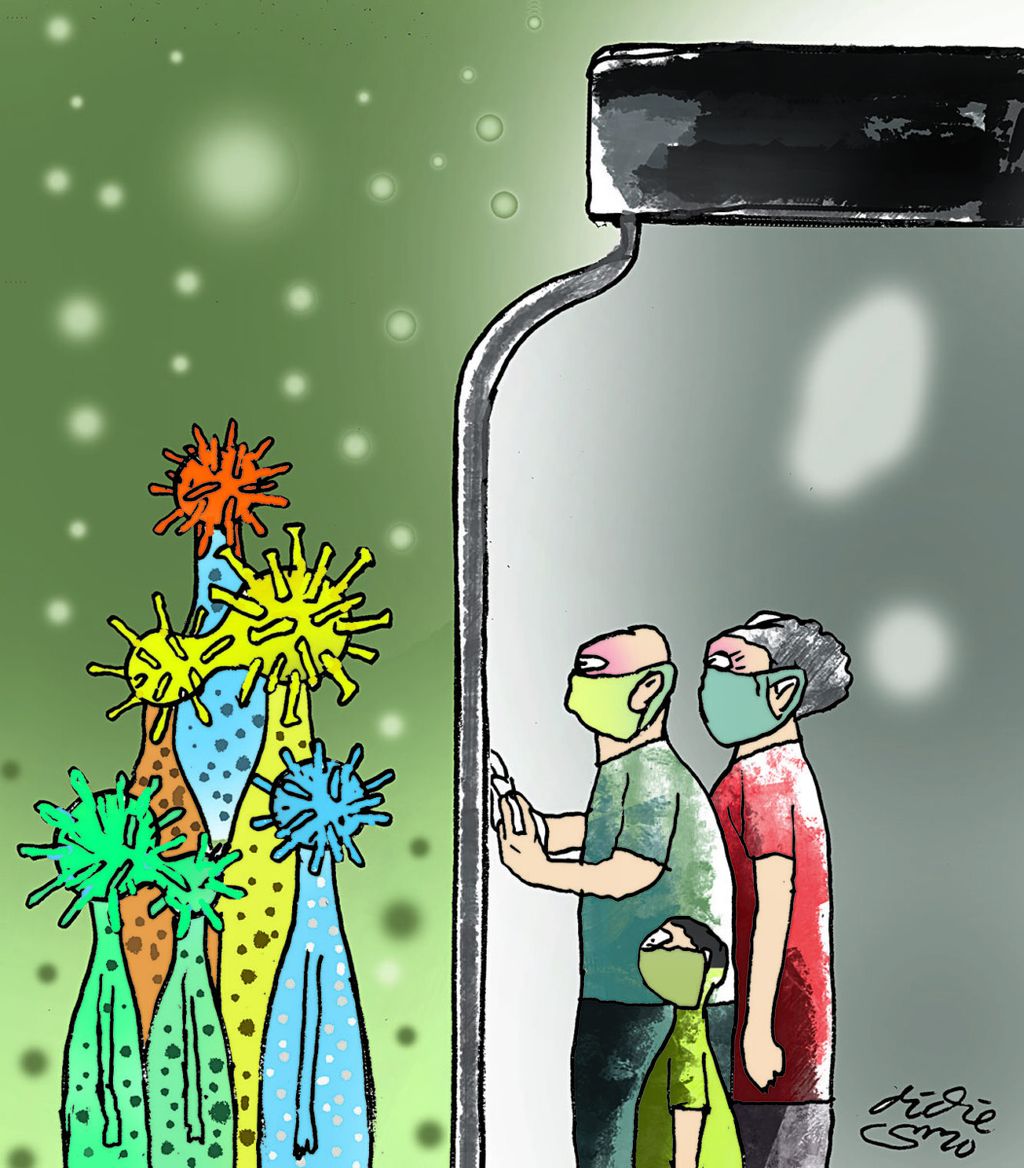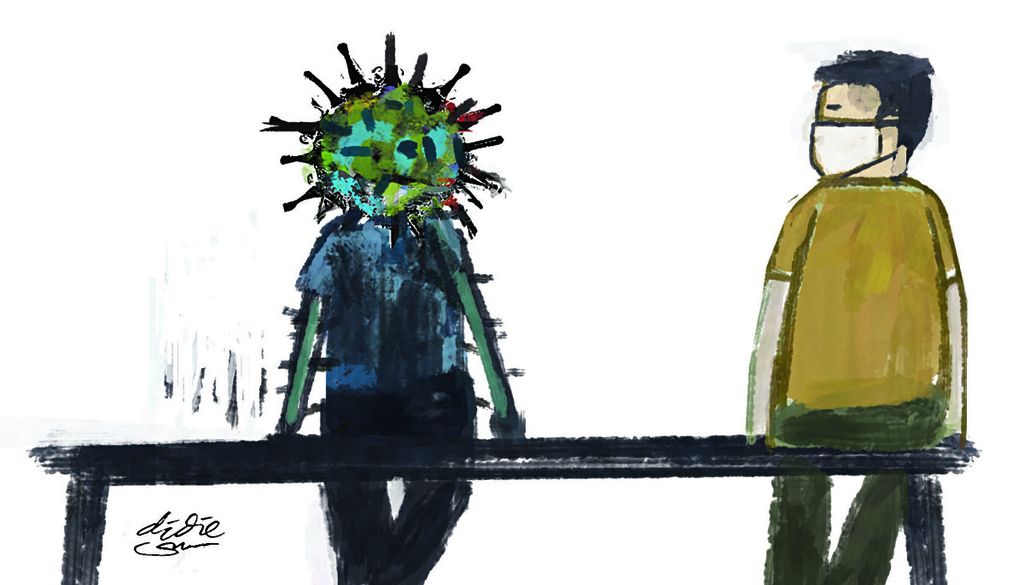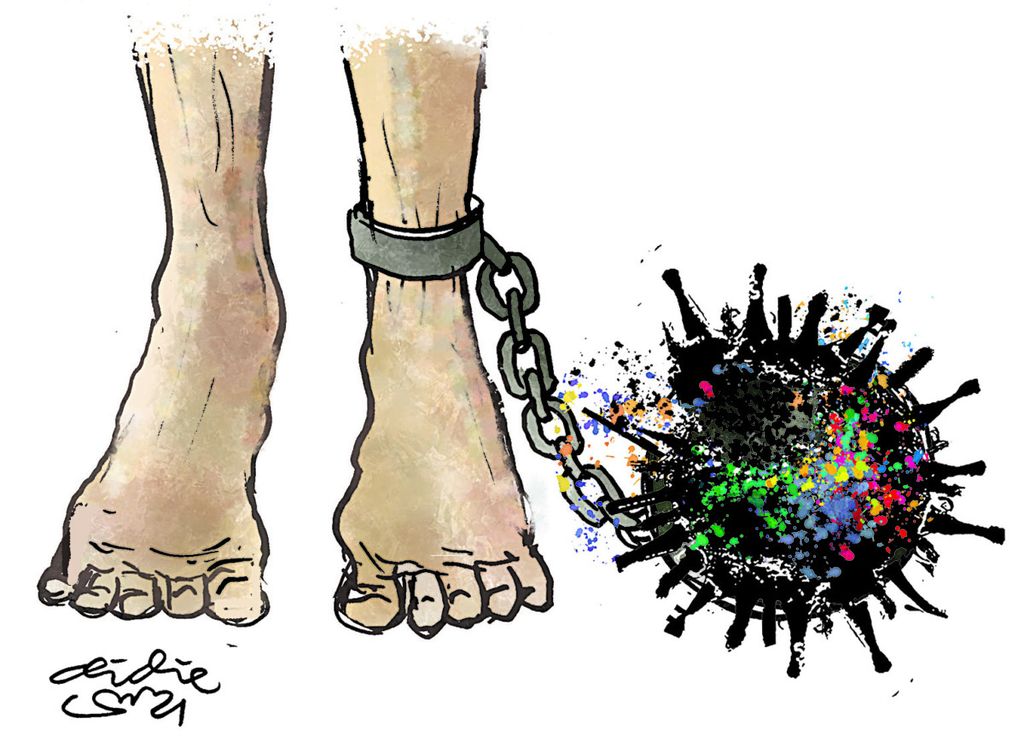Setting Pandemic Road Map Priorities
Cowd-based economic priority should be avoided as it has the risk of worsening the pandemic — unless we are increasingly insensitive to the COVID-19 incidence and the mortality rate still showing high figures.

Controlling the wild COVID-19 pandemic is admittedly not as easy as claimed — the coronavirus is even controlling us.
Our entire society, nation and state inevitably have to be further restricted. Households and state budgets also have to be drained in order to survive the invasion of SARS-CoV-2. The aggression of the fiercest Delta variant continues to spread doom.
For over a month, since 11 July 2021 the daily death toll has exceeded a 1,000 people a day. Also for a month, our mortality rate has become a world record. Even though — on this year’s 76th National Independence anniversary — new daily case increases declined to 20,741, the death tally remained high, reaching 1,180.
The peak of new daily cases of 56,757 occurred on 15 July and the highest death rate of 2,069 on 27 July — compare the situation with the start of the emergency public activity restrictions (PPKM) in Java-Bali on 3 July. At the time, new daily cases totaled 27,913 with 493 deaths.
Also read:
> ‘Blessed’ Homecoming and Indian Setback
> Responding to the New Covid-19 Variant
We were, in fact, satisfied to hear the affirmation of Coordinating Maritime Affairs and Investment Minister Luhut B Pandjaitan, the emergency PPKM commander, that the situation was “considerably under control”. He even challenged whoever said it was not yet controlled.
“Just come to me, I will show them that it’s under control,” he said at a virtual press meeting on 12 July. The result?
The PPKM that should have been finished on 19 July was extended. Now, it would be in place until 23 August. How long the extension will go on is unclear. The rising figures of new cases and deaths could not yet be curbed either, although testing decreased.
The bitter reality we should also notice is the state budget with increasing debts. In his speech delivering the financial note and the state budget for 2022, President Joko “Jokowi” Widodo stated that the net debt issuance in 2022 would reach Rp 991.3 trillion (US$68.57 billion). This means additional state debts. Actually, the debt position in May 2021 was already $415 billion.
Sadly, the 2022 budget for National Economic Recovery (PEN), which includes health expenditure for COVID-19 control, decreases drastically to Rp 321.2 trillion, down by 56.8 percent of this year’s Rp 744.45 trillion (the cost of debt interest is even bigger, Rp 405.9 trillion!).

The budget allocation indicates a new perspective. As revealed by Health Minister Budi Gunadi Sadikin, the President gave ministers directives to promptly draw up a road map describing how to live the “new normal” under the COVID-19 pandemic (Kompas, 9/8/2021). The assumption is that the pandemic cannot be fully controlled within a short time.
The roadmap covers the target of vaccination and the adjustment of economic activity amid the pandemic. In the case of vaccination, for the zone of Java-Bali, the government set the minimum target of 70 percent by the end of September.
In practical terms, the Health Minister will start a pilot project regulating the application of health protocols by digital means in these sectors: offices, industrial zones, trade, education, religious services, transportation and tourism. The plan for road map charting may be due to the positive developments in August, particularly in Jakarta and Bali.
New daily cases tend to stably decline, the bed occupation rate (BOR) in hospitals and emergency hospitals in Jakarta is decreasing, ICU rooms are no longer packed by patients and vaccination is claimed to reach 70 percent in Jakarta and Bali.
Also read:
> Negligence Triggers Spike in Covid-19 Cases
The other moment is the announcement of Statistics Indonesia (BPS), which said that the second quarter economic growth rate of 2021 had reached 7.07 percent year-on-year. The BPS’ announcement gave the government more confidence and prompted the charting of a road map for living in coexistence with the pandemic, called a “new normal vaccination era” (Kompas, 15/8/2021).
Trade Minister M Lutfi and the health minister explained the scenario. During 10-16 August, the government tried out the opening of 138 shopping centers in Jakarta, Bandung in West Java, Surabaya in East Java and Semarang in Central Java. The requirements are that the capacity of visitors is limited to 25 percent and they have to be vaccinated, entertainment and gaming areas remain closed, people aged over 70 and
infants below two years old are not allowed to enter. Later, as of 16 August, export-based industries are allowed to be 100 percent open, with “a number of strict requirements”.

Pandemic control priorities
The President’s order to chart a road map for a new normal in coexistence with the pandemic is followed up by his ministers with the relaxation of economic activity. Their priority goes to the sector of export-based industries. This step indicates the greater importance given to the pursuit of foreign exchange to prevent its reserves from dropping.
Meanwhile, the choice of opening shopping centers shows that the government wants to speedily rescue large-scale business players. The economic-oriented choices are in view of the high dependence of the nation and state on economic operation. During the one and a half-year pandemic, the economy has been disarrayed to the point of recession. Exports are halted, drug and medical equipment imports are soaring, foreign exchange reserves shrinking and state income plummeting, forcing the government to raise new debts.
Therefore, it can be understood that the government apparently cannot help speeding up economic activity. The order to draw up the road map is thus directly taken as an opportunity to immediately open malls, shopping centers and export-based industries. It carries the hope that exporters can soon increase foreign exchange and large-scale business players can serve as a growth locomotive that will later draw other businesses of smaller scales. Four decades, economists have called it the “trickle-down effect”.
The problem is that the policy, which is more inclined toward the economy, can be seen as less appropriate, especially from the viewpoint of public health. Unless cautiously implemented, the hastened slackening of economic activity even has the potential to turn into a boomerang. It may backfire on the positive gains already apparent over the last month, notably in Java and Bali.
Also read:
> Vaccine-induced and Natural Immunity
The government should be reminded of the need to reconsider the hurried activity relaxation policy. The time has not come yet to chart an economic oriented road map for a new life in coexistence with the pandemic because this pandemic is not yet under control. What is more important is the charting of a road map for tightened pandemic control first.
For instance, a target is set that by December 2021, the pandemic can be controlled. After the pandemic is under control, with declining cases and a flattening curve, only then can a road map for coexistence with the pandemic be worked out — “recovering” first, before one can start working right away.
If relaxation is realized too early, it has the high risk of again increasing transmission, as the fact is that so far, it hasn’t yet been controlled. It’s true that new daily cases have now decreased (with reduced testing), but it is still temporary and very sensitive to triggering factors. Moreover, the daily death rate remains high.
Crowding in whatever form also has the high potential to trigger increased infection as long as herd immunity is not yet achieved. The harried permission to open crowd-based businesses like malls and shopping centers is feared to step up transmission and complicate control. The pandemic will eventually last longer and be exhausting and more cost-consuming.

More realistic steps
Health experts are still searching for the right and efficient way to control and even eradicate the virus causing COVID-19. However, this virus is a creature with certain specifications that also possess the mechanism of mutation to resist eradication. With the continuous elimination effort, this virus is mutating to become smarter and attack more aggressively. The Delta variant is the fiercest today, which can later give rise to a more ferocious new generation.
We cannot yet control it, let alone totally eliminate it. In this situation, returning to a normal life like that prior to the pandemic may only be a dream. In fact, life has to go on and it’s impossible to always strictly keep one’s distance.
So, a proposal deemed more realistic has arisen on how to live in coexistence with the pandemic. Several countries and regions succeed in controlling the virus. China (including Hong Kong), Iceland and New Zealand are some examples of countries succeeding in provisionally controlling the coronavirus invasion since the pre-vaccination period. They rely on tight restriction control, mask-wearing, physical distancing, increased testing and contact tracing, instead of testing reductions to gloss over the COVID-19 development curve.
By referring to history, it’s not impossible to coexist more safely with the COVID-19 pandemic. We were formerly attacked by smallpox and polio.
Based on historical studies and research, there is evidence that the world had suffered an earlier smallpox pandemic 3,000 years ago.
Also read:
> Vaccination and Threat of Virus Mutation
This means that for 3,000 years, humans had lived in coexistence with smallpox and only succeeded in fully eliminating it in the 1970s. The method of prevention is about the same: distancing, isolating patients from healthy people and treating patients. The next example is polio, which can almost entirely be eradicated. Two of the three serotypes of the polio virus have been globally eliminated and wild polio virus cases decreased by 99 percent in 1988-2018.
With their means of handling viruses not as advanced as today, people were forced to coexist with smallpox (variola) and polio, which were also very dangerous at the time. Three out of 10 smallpox patients would die. One out of 200 polio patients were permanently paralyzed and 15 to 20 percent of those paralyzed died. Yet humans did not face “extinction” because by reasoning, there was always a method to prevent transmission.
The method of preventing the pandemic’s spread was about the same: distancing, separating the sick from healthy people and treating the sick. COVID-19 is also handled by the standard method of quarantine (plus mask wearing, testing and tracing). Later, with vaccination, polio and smallpox gradually vanished. Edward Jenner introduced the vaccine in 1796.

We also deal with COVID-19 in the same way. Progress in science and technology had accelerated disease-handling methods. COVID-19 vaccines were developed within less than a year. Margaret Keenan, 91, was the first person to get a Pfizer vaccine shot in Britain on 8 December
2020. Now, hundreds of millions of people have been vaccinated in the last eight months.
Several experts in New Zealand are studying and comparing the handling of the polio epidemic and COVID-19 pandemic by using the three-point evaluation system for 17 variables of elimination, such as vaccine supply, duration of immunity, public health behavior and infection control management. By examining the various variables, they found that COVID-19 has 28 points and polio 26 points of the total of 51.
This means that the entire handling of the COVID-19 pandemic is only slightly higher, so our methods are not far different from the handling of the polio epidemic some decades ago.
Complete vaccination should be intensified so as to adequately lead to herd immunity.
The constraints on COVID-19 eradication are indeed highly varied in across countries and regions. There are those involving narrations (like distrusting vaccination and believing hoaxes even more), minimum health service capacity, limited budgets and a lack of trust in the government. The last point affects many countries, both advanced and less developed.
In the United States, the public had no trust in the government of former president Donald Trump, which openly trivialized the pandemic, finally ending in Trump’s reelection failure. In a different degree and scale, this also happened in Indonesia, especially in the early pandemic period. Health officials gave the impression of underestimating the virus and responding slowly, which was later worsened by the embezzlement of social aid for pandemic victims.
For the restoration of trust, the time has come to more calmly draw up a road map for living in coexistence with the virus. Steps to strengthen the handling of the pandemic should first be determined by prioritizing the aspect of health. The curve of cases and deaths should seriously be flattened according to the World Health Organization’s guidance.

Djoko Santoso
Complete vaccination should be intensified so as to adequately lead to herd immunity. For the moment, crowd-based economic priority should be avoided as it has the risk of worsening the pandemic — unless we are increasingly insensitive to the COVID-19 incidence and the mortality rate still showing high figures.
Djoko Santoso, Professor of medicine, Airlangga University; chairman of the Health Agency, Indonesian Ulema Council of East Java; survivor of COVID-19
This article was translated by Aris Prawira.